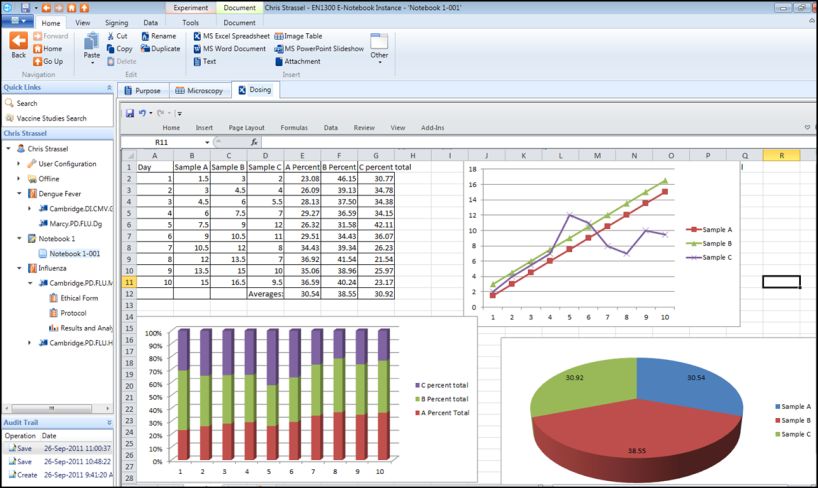Electronic Laboratory Notebooks: Now its time to replace paper laboratory notebooks
A burgeoning array of digital tools is helping researchers to document experiments with ease. Electronic Laboratory Notebooks (ELNs) is the latest science tool where you can write every step of your research and especially your raw data. The aim of the lab book is to keep track on your research project carefully at all the steps of your experiments.
The lab notebook is a very valuable tool for researchers because it holds new ideas and procedures that can base new inventions, can be subjects for patents and patents can be worth millions of dollars. But these ideas are only worthwhile if they have been properly documented and hence the laboratory notebook becomes so important.
Electronic Laboratory Notebooks comprise software that helps researchers to document experiments, often has features such as protocol templates, collaboration tools, support for electronic signatures, and the ability to manage the lab inventory. Today’s early career researcher, who have grown up with digital technology, tend to expect – and to embrace electronic solutions.
The recent trend in research has also created a demand for such changes – as scientists deal with increasing volumes of data, glueing printed results into a paper notebook becomes more archaic. And ELN market has expanded to include more intuitive tools, such as cloud-based products, which are easier to adopt than those requiring information technology (IT) support to install.
In some laboratories, particularly, basic science laboratories the lab notebook is typically the primary document that is used to keep records of things that happen. The laboratory notebook will be the document that is pulled if there is ever any question of ownership of intellectual property especially in a medical product’s environment where a lab Notebook is very important because many of its results may base the development of products that will be used in humans later.
ELN developers say that they have seen signs of growing interest in researchers than before as they questioned the utility of ELNs earlier but now they are quicker to commit. Benching, an electronic research platform in SanFrancisco, California, has seen a use of its ELN in academia more than double for the past two years, with thousands of researchers now logging in every day.
Many universities also have started to provide such products to their researchers. For instance, LabArchives in Carlsbad, California, has sold campus-wide site licenses for its ELN platform to more than 375 research institutions worldwide.
The laboratory notebook is an important part of assuring the quality and integrity of your data, you are responsible for the disciplined management of this book. Advocates tout the many advantages of ELNs over their paper counterparts. They are easy to search copy and archive.
Researchers can link experiments to specific samples or files, as well as share information easily with other lab members and collaborators, facilitating reproducibility. There are downsides also, as many companies offering free versions of their ELN software, and they often come with limits on the data storage or file size. Despite shortcomings, more and more researchers are going digital.
The Electronic Lab Notebook Matrix, collated by Harvard Medical School in Boston, Massachusetts, lists the details of more than 50 features for 27 ELNs and a lab folder that provides a guide to 16 popular ELNs. Some labs prefer ELNs that can run on mobile devices.
The researchers, who chose Microsoft’s note-taking software OneNote as an ELN, use the tablet’s camera to take photographs of instruments and results, and a stylus to annotate images. Links to favourite’s software could tip the scales for some scientists. For instance, Organic chemists prefer the PerkinElmer Signals Notebook because it integrates with the company’s chemical-structure-drawing-software ChemDraw, enabling structures to be added to the ELN.









